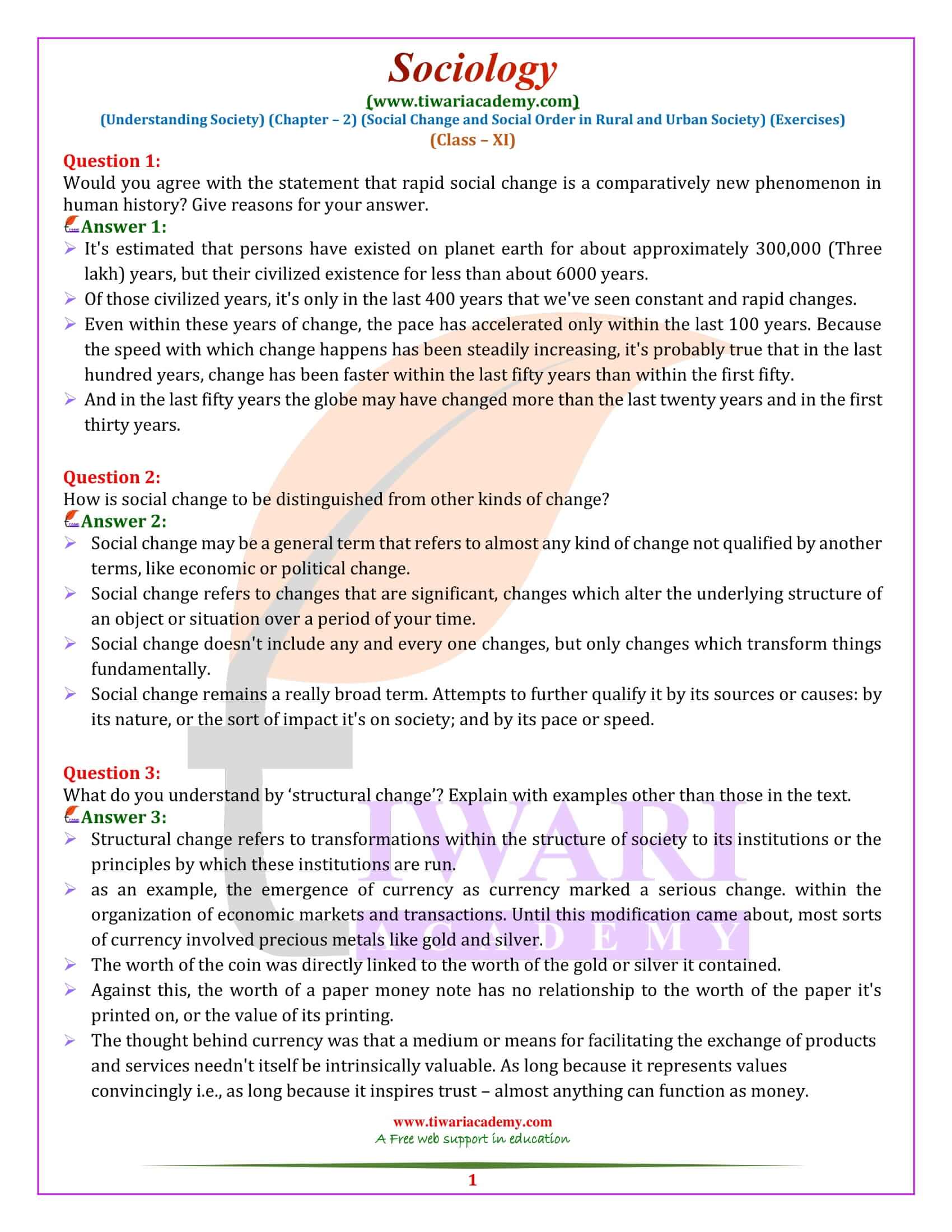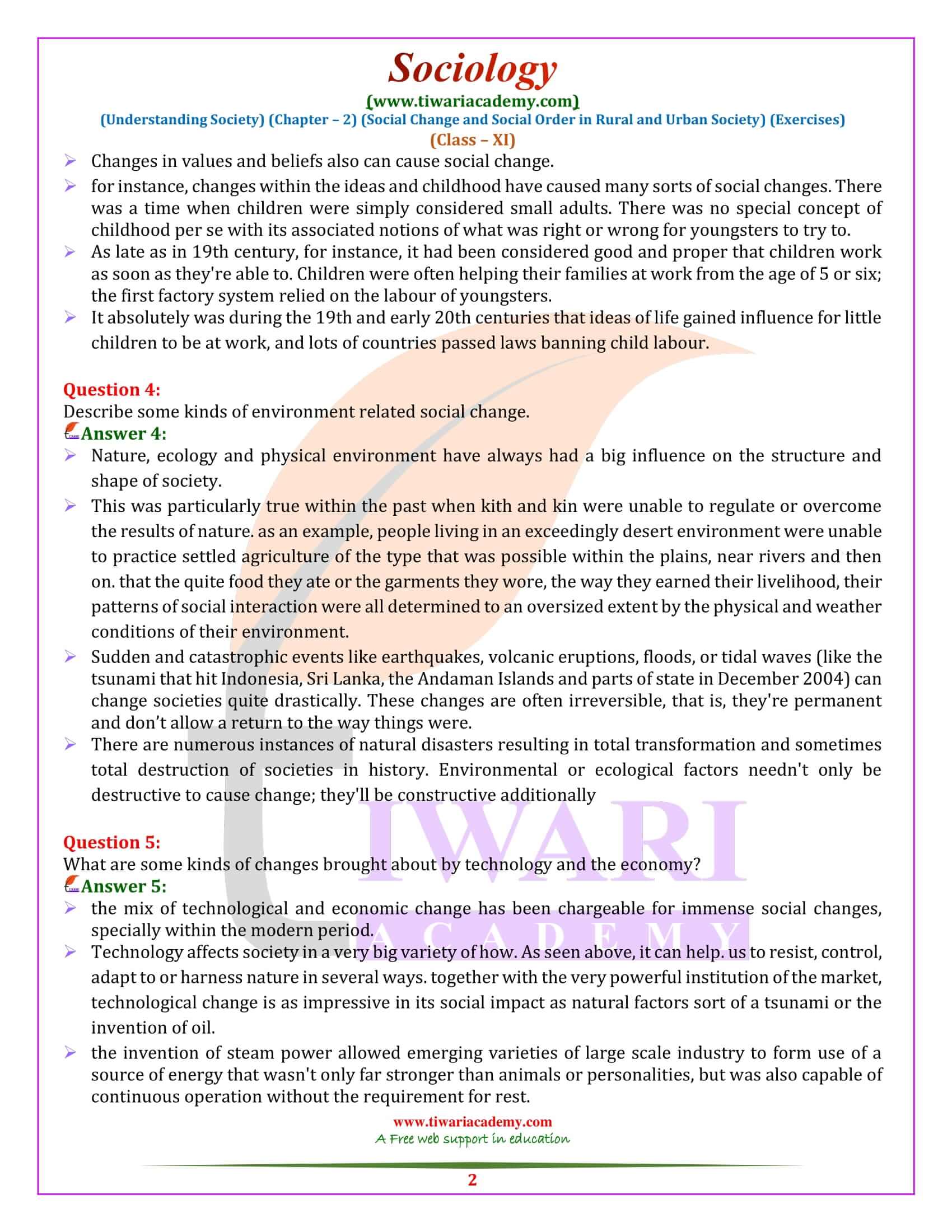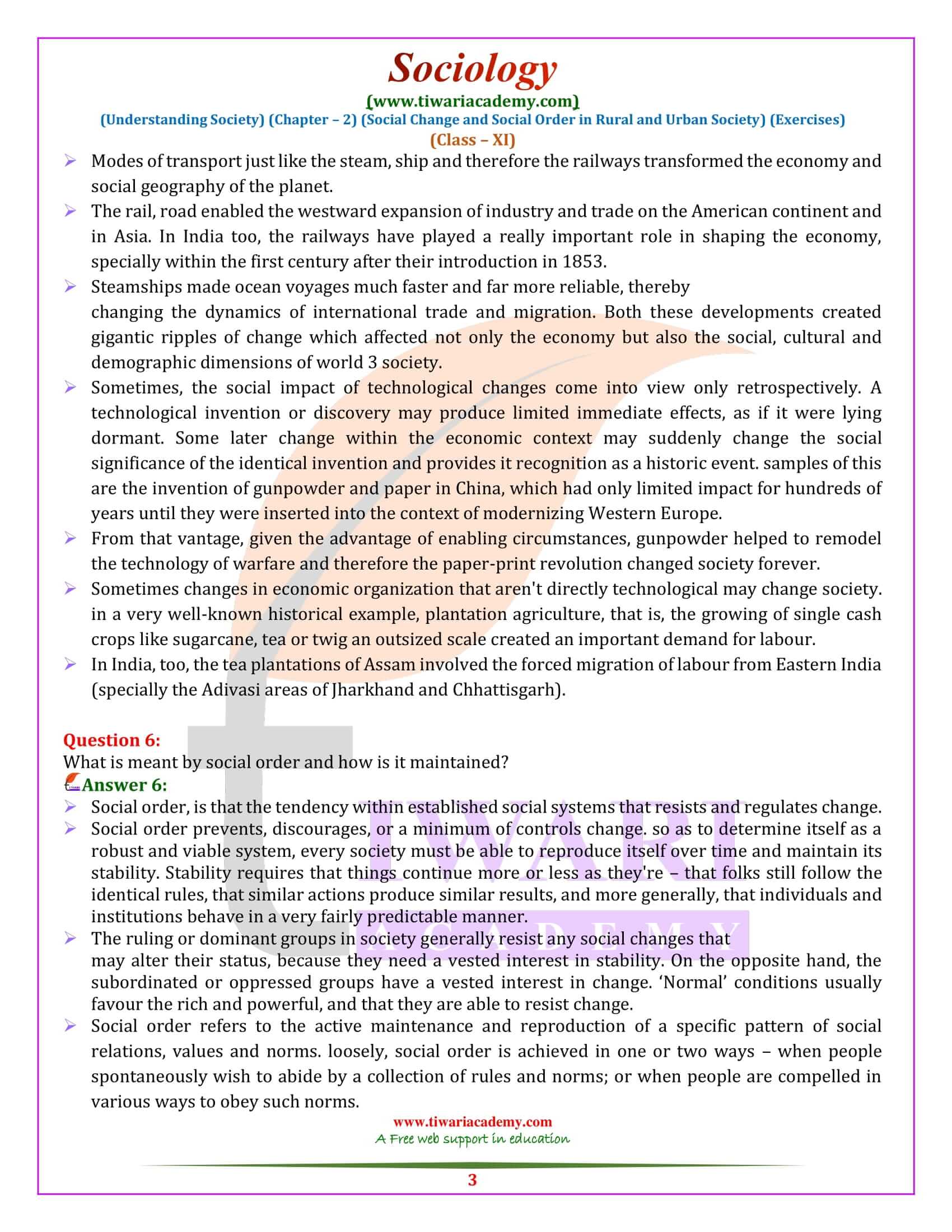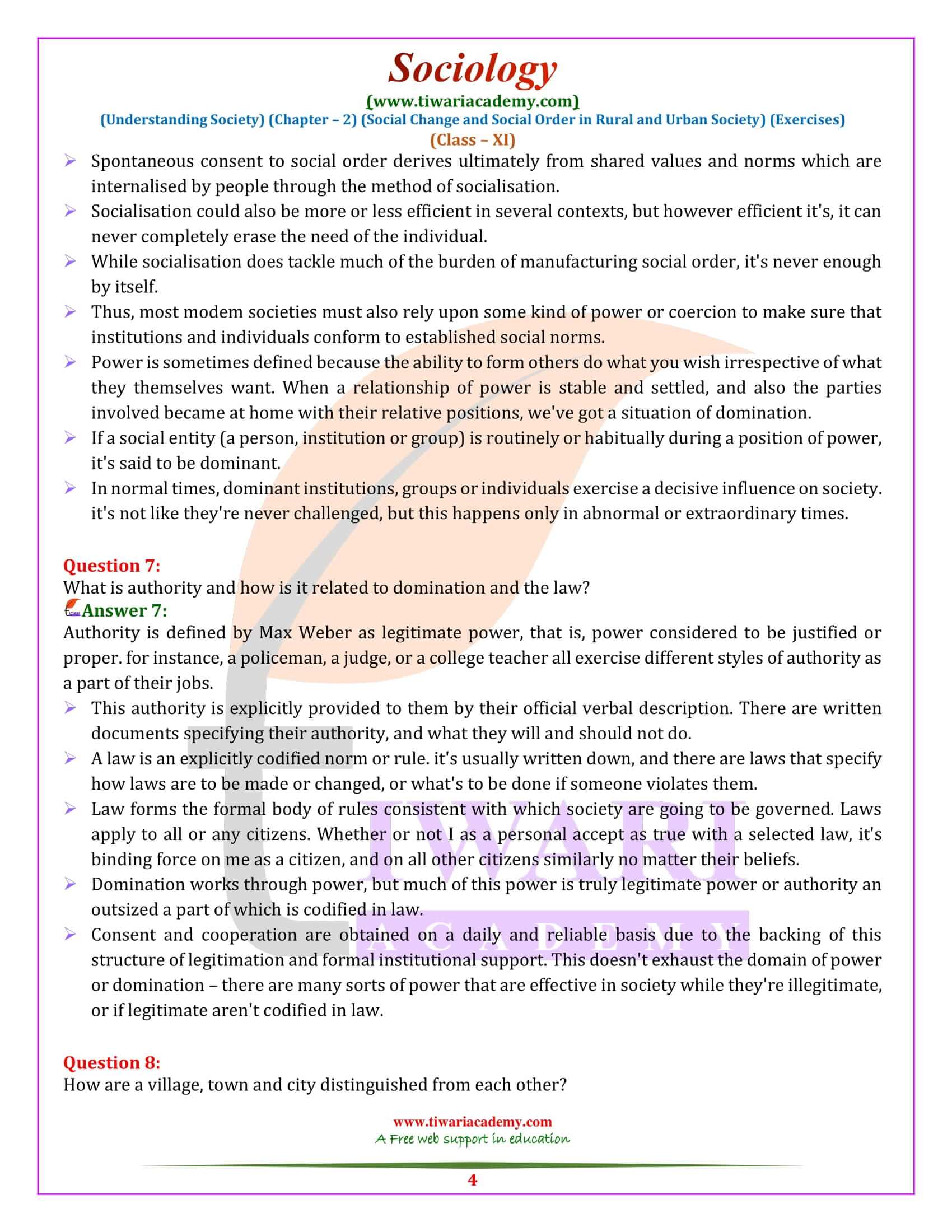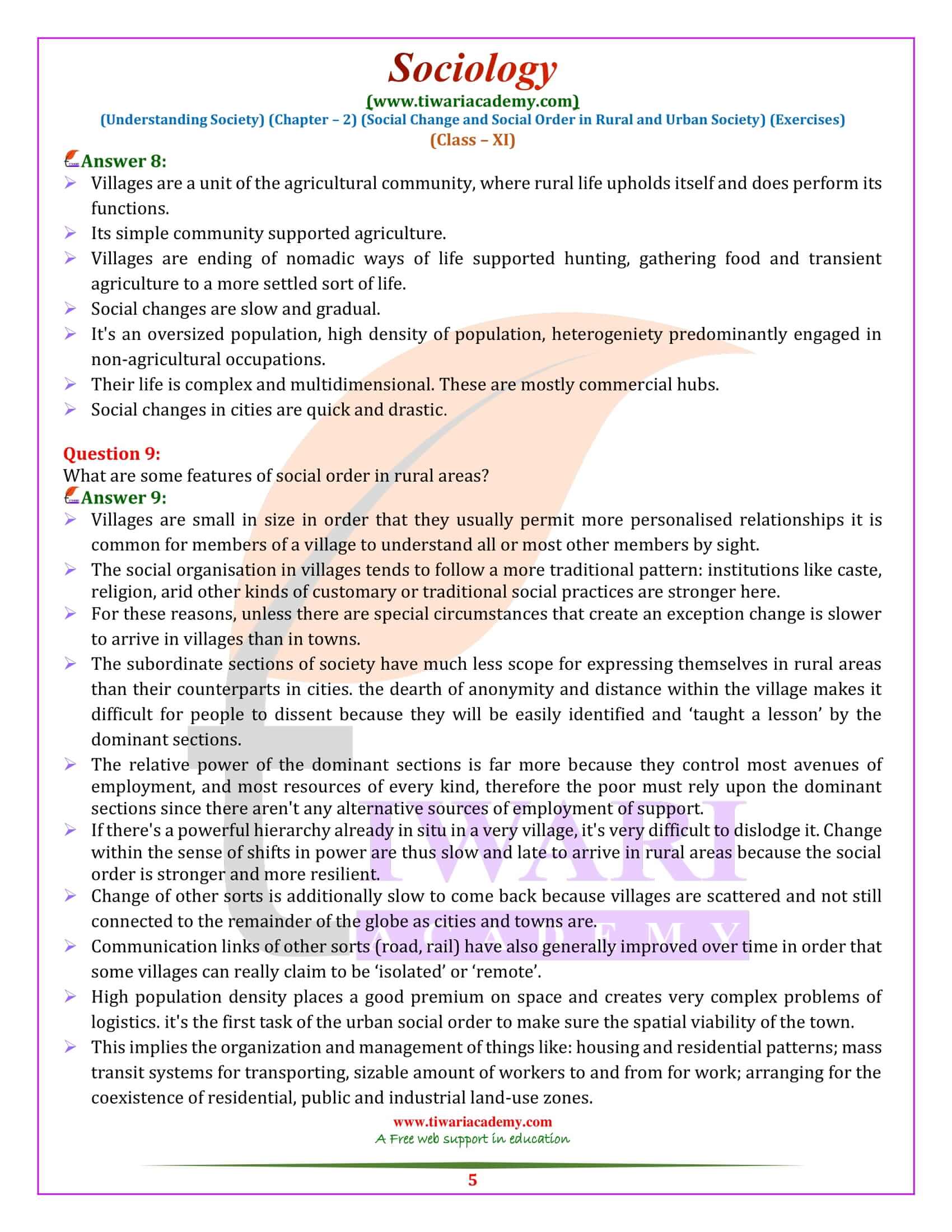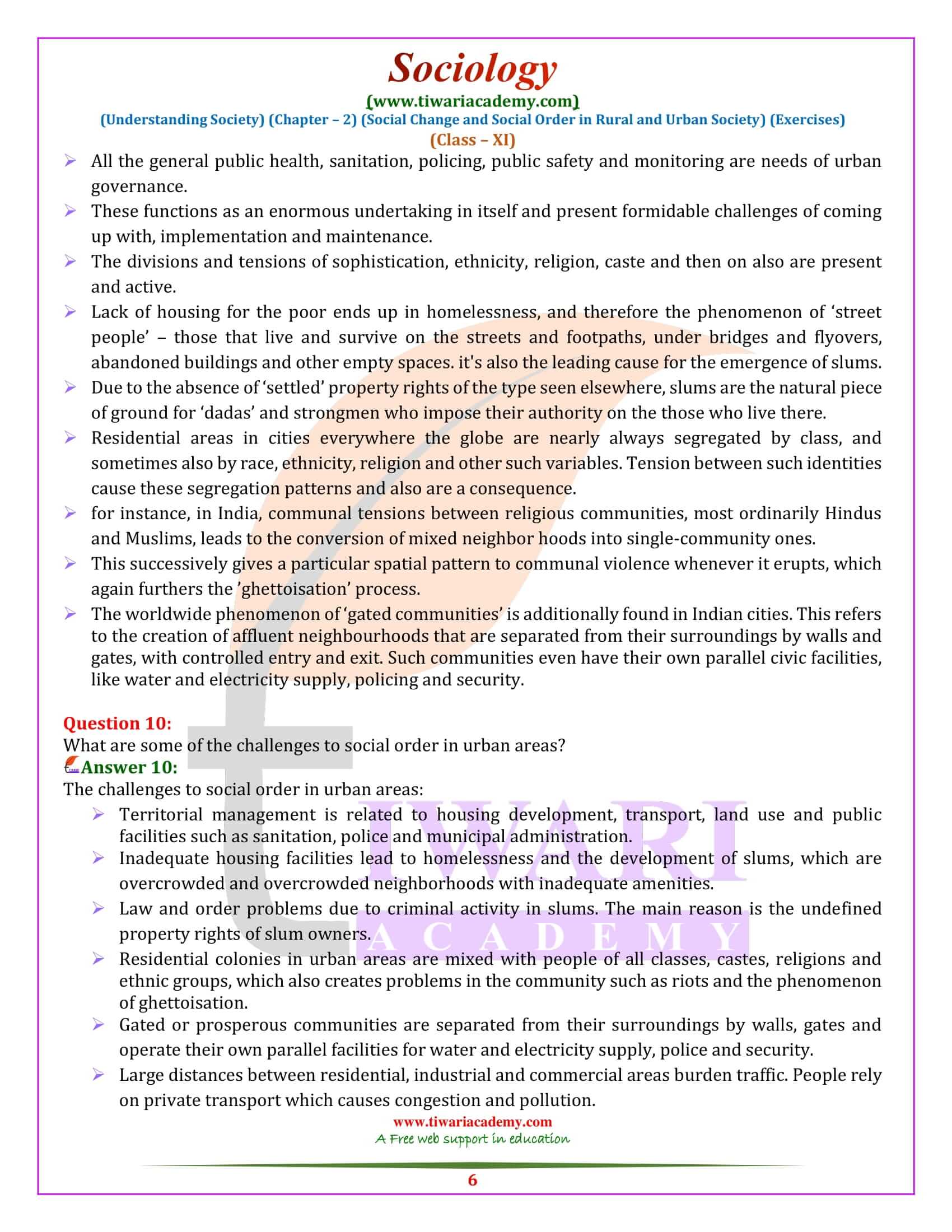NCERT Solutions for Class 11 Sociology Chapter 2 Social Change and Social Order in Rural and Urban Society in English Medium updated for CBSE 2025-26. 11th Sociology Part II Understanding Society chapter 2 multiple choice questions with extra question answers are given here to revise the entire chapter.
Class 11 Sociology Chapter 2 Social Change and Social Order Question Answers
Would you agree with the statement that rapid social change is a comparatively new phenomenon in human history? Give reasons for your answer.
- It’s estimated that persons have existed on planet earth for about approximately 300,000 (Three lakh) years, but their civilized existence for less than about 6000 years.
- Of those civilized years, it’s only in the last 400 years that we’ve seen constant and rapid changes.
- Even within these years of change, the pace has accelerated only within the last 100 years. Because the speed with which change happens has been steadily increasing, it’s probably true that in the last hundred years, change has been faster within the last fifty years than within the first fifty.
- And in the last fifty years the globe may have changed more than the last twenty years and in the first thirty years.
How is social change to be distinguished from other kinds of change?
- Social change may be a general term that refers to almost any kind of change not qualified by another terms, like economic or political change.
- Social change refers to changes that are significant, changes which alter the underlying structure of an object or situation over a period of your time.
- Social change doesn’t include any and every one changes, but only changes which transform things fundamentally.
- Social change remains a really broad term. Attempts to further qualify it by its sources or causes: by its nature, or the sort of impact it’s on society; and by its pace or speed.
What do you understand by ‘structural change’?
Structural change refers to transformations within the structure of society to its institutions or the principles by which these institutions are run.
as an example, the emergence of currency as currency marked a serious change. within the organization of economic markets and transactions. Until this modification came about, most sorts of currency involved precious metals like gold and silver.
The worth of the coin was directly linked to the worth of the gold or silver it contained.
Against this, the worth of a paper money note has no relationship to the worth of the paper it’s printed on, or the value of its printing.
The thought behind currency was that a medium or means for facilitating the exchange of products and services needn’t itself be intrinsically valuable. As long because it represents values convincingly i.e., as long because it inspires trust – almost anything can function as money.
Changes in values and beliefs also can cause social change.
For instance, changes within the ideas and childhood have caused many sorts of social changes. There was a time when children were simply considered small adults. There was no special concept of childhood per se with its associated notions of what was right or wrong for youngsters to try to.
As late as in 19th century, for instance, it had been considered good and proper that children work as soon as they’re able to. Children were often helping their families at work from the age of 5 or six; the first factory system relied on the labour of youngsters.
It absolutely was during the 19th and early 20th centuries that ideas of life gained influence for little children to be at work, and lots of countries passed laws banning child labour.
Describe some kinds of environment related social change.
Nature, ecology and physical environment have always had a big influence on the structure and shape of society.
This was particularly true within the past when kith and kin were unable to regulate or overcome the results of nature. as an example, people living in an exceedingly desert environment were unable to practice settled agriculture of the type that was possible within the plains, near rivers and then on. that the quite food they ate or the garments they wore, the way they earned their livelihood, their patterns of social interaction were all determined to an oversized extent by the physical and weather conditions of their environment.
Sudden and catastrophic events like earthquakes, volcanic eruptions, floods, or tidal waves (like the tsunami that hit Indonesia, Sri Lanka, the Andaman Islands and parts of state in December 2004) can change societies quite drastically. These changes are often irreversible, that is, they’re permanent and don’t allow a return to the way things were.
There are numerous instances of natural disasters resulting in total transformation and sometimes total destruction of societies in history. Environmental or ecological factors needn’t only be destructive to cause change; they’ll be constructive additionally.
What is meant by social order and how is it maintained?
Social order, is that the tendency within established social systems that resists and regulates change.
Social order prevents, discourages, or a minimum of controls change. so as to determine itself as a robust and viable system, every society must be able to reproduce itself over time and maintain its stability. Stability requires that things continue more or less as they’re – that folks still follow the identical rules, that similar actions produce similar results, and more generally, that individuals and institutions behave in a very fairly predictable manner.
The ruling or dominant groups in society generally resist any social changes that
may alter their status, because they need a vested interest in stability. On the opposite hand, the subordinated or oppressed groups have a vested interest in change. ‘Normal’ conditions usually favour the rich and powerful, and that they are able to resist change.
Social order refers to the active maintenance and reproduction of a specific pattern of social relations, values and norms. loosely, social order is achieved in one or two ways – when people spontaneously wish to abide by a collection of rules and norms; or when people are compelled in various ways to obey such norms.
Spontaneous consent to social order derives ultimately from shared values and norms which are internalised by people through the method of socialisation.
Socialisation could also be more or less efficient in several contexts, but however efficient it’s, it can never completely erase the need of the individual. While socialisation does tackle much of the burden of manufacturing social order, it’s never enough by itself.
Thus, most modem societies must also rely upon some kind of power or coercion to make sure that institutions and individuals conform to established social norms.
Power is sometimes defined because the ability to form others do what you wish irrespective of what they themselves want. When a relationship of power is stable and settled, and also the parties involved became at home with their relative positions, we’ve got a situation of domination.
If a social entity (a person, institution or group) is routinely or habitually during a position of power, it’s said to be dominant.
In normal times, dominant institutions, groups or individuals exercise a decisive influence on society. it’s not like they’re never challenged, but this happens only in abnormal or extraordinary times.
